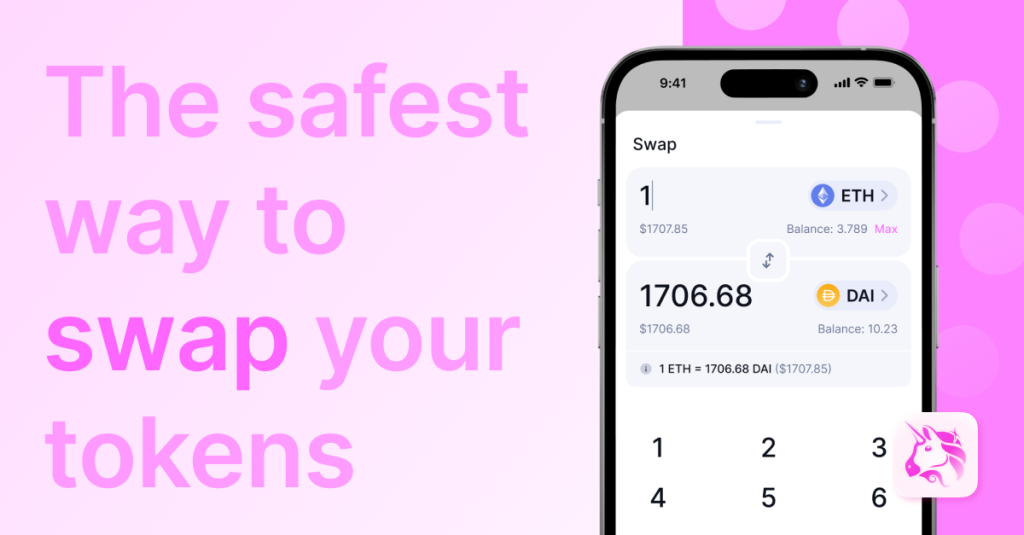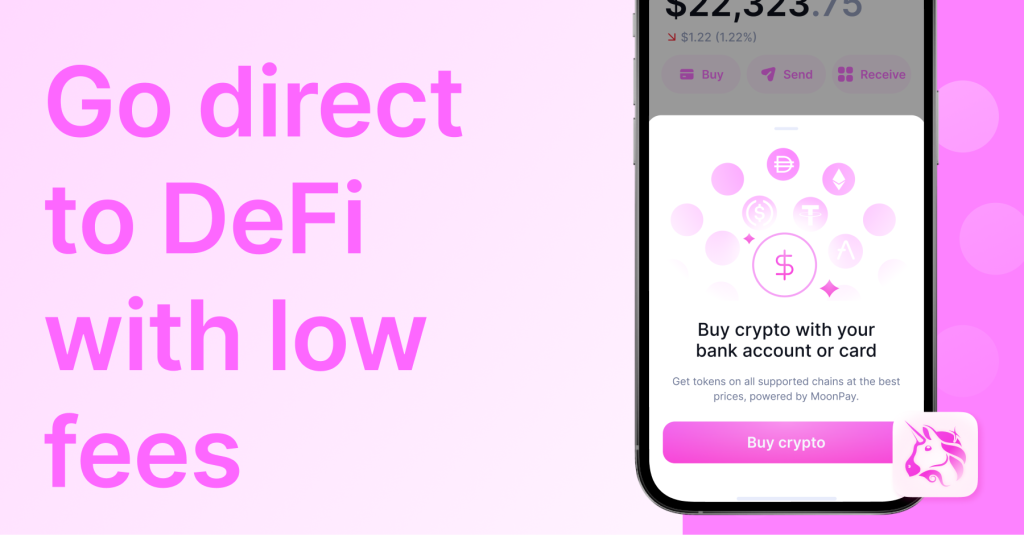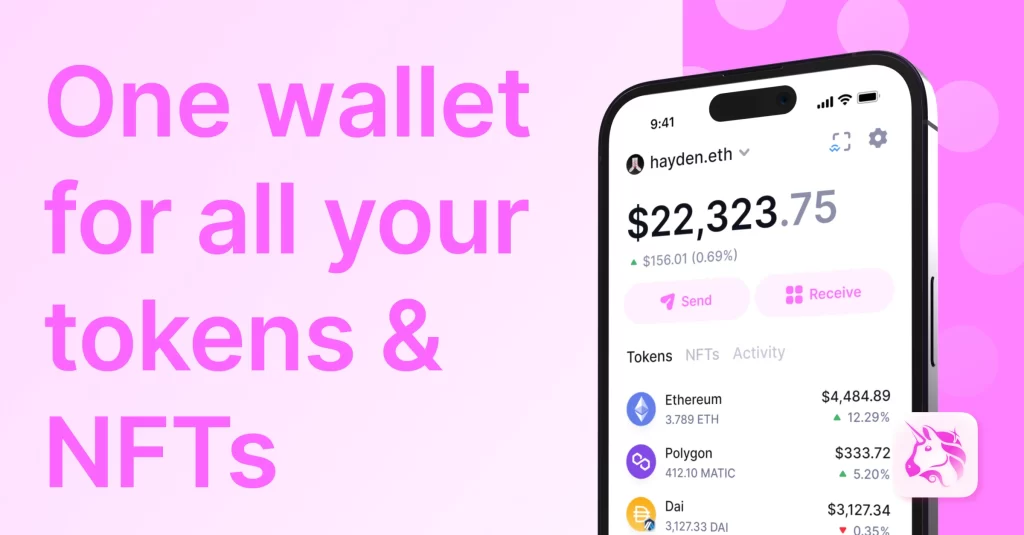
Yes, Uniswap is open source, with its codebase publicly available on GitHub for anyone to view and contribute to.
Understanding Open Source
Open source software has become a fundamental aspect of the modern technological landscape, driving innovation and collaboration across various industries. Understanding what open source means and its benefits can provide insights into why it is highly valued.
Definition of Open Source
- Publicly Accessible Code: Open source software is characterized by its publicly accessible code. This means that anyone can view, modify, and distribute the software’s source code.
- Licensing: Open source projects are distributed under licenses that comply with the Open Source Definition. These licenses grant users the freedom to use, study, change, and share the software.
- Community-Driven Development: Development of open source software often involves a collaborative effort from a global community of developers. Contributions come from individuals, organizations, and companies who work together to improve the software.
Benefits of Open Source Software
- Transparency and Trust: Open source software allows users to inspect the code for security vulnerabilities and verify that the software does what it claims. This transparency builds trust among users and developers.
- Cost-Effectiveness: Open source software is typically free to use. This reduces costs for individuals and organizations, allowing them to allocate resources to other areas such as support and development.
- Innovation and Flexibility: The collaborative nature of open source encourages innovation. Developers can experiment with new features and improvements without the restrictions often imposed by proprietary software. This flexibility allows for rapid iteration and adaptation to changing needs.
- Security and Reliability: With many eyes on the code, open source software tends to be more secure and reliable. Bugs and vulnerabilities are quickly identified and fixed by the community. Regular updates and peer reviews enhance the overall quality of the software.
- Community Support: Open source projects often have strong community support. Users can access forums, documentation, and user groups to seek help and share knowledge. This community-driven support network can be invaluable for troubleshooting and learning.
- No Vendor Lock-In: Users of open source software are not tied to a particular vendor. This freedom allows users to modify the software to meet their specific needs and avoid dependence on a single provider for updates and support.

Uniswap’s Open Source Nature
Uniswap, as a decentralized exchange, embraces the open source model to foster transparency, innovation, and community involvement. By making its codebase publicly accessible, Uniswap ensures that its development process is collaborative and transparent.
Uniswap’s Codebase on GitHub
- Public Repository: Uniswap’s codebase is hosted on GitHub, a widely-used platform for open source projects. This repository is accessible to anyone who wishes to view, fork, or contribute to the code.
- Repository Structure: The GitHub repository is well-organized, with separate sections for the core protocol, frontend interface, and various utilities. This structure makes it easier for developers to navigate and understand the different components of the Uniswap platform.
- Documentation: Comprehensive documentation is provided within the repository. This includes setup guides, API references, and explanations of the underlying algorithms. Good documentation is crucial for helping new contributors get started and understand the project’s architecture.
- Regular Updates: The Uniswap team regularly updates the repository with new features, bug fixes, and improvements. These updates are tracked through commits, providing a transparent history of changes and developments.
Community Contributions
- Collaborative Development: Uniswap’s open source nature encourages collaborative development. Developers from around the world can contribute code, suggest improvements, and report issues. This collective effort enhances the platform’s robustness and functionality.
- Pull Requests: Contributors can submit pull requests to propose changes or additions to the codebase. These pull requests are reviewed by the Uniswap core team and the community, ensuring that only high-quality code is merged into the main repository.
- Issue Tracking: GitHub’s issue tracking system allows users to report bugs, request features, and discuss potential improvements. This open dialogue between users and developers helps prioritize development efforts and address problems promptly.
- Code Reviews: Community contributions undergo rigorous code reviews to maintain the quality and security of the software. Experienced developers examine submitted code for potential issues, ensuring that it meets the project’s standards before integration.
- Hackathons and Grants: Uniswap supports community engagement through hackathons and grant programs. These initiatives encourage developers to create innovative solutions and contribute to the ecosystem, further enhancing the platform.
- Educational Resources: The community actively produces educational resources such as tutorials, blogs, and videos. These resources help new users and developers understand how to use and contribute to Uniswap, fostering a more knowledgeable and capable community.
Advantages of Uniswap Being Open Source
Uniswap’s decision to adopt an open source model brings numerous benefits, enhancing the platform’s transparency, trustworthiness, and innovation. Here are the key advantages of Uniswap being open source.
Transparency and Trust
- Visible Codebase: By making its code publicly available, Uniswap ensures that anyone can review the code for accuracy, security, and functionality. This transparency builds trust among users and developers, as they can verify that the platform operates as intended.
- Auditable Security: The open source nature allows security experts and developers worldwide to audit the code. This collective scrutiny helps identify and fix vulnerabilities more quickly, enhancing the overall security of the platform.
- Community Oversight: Open source projects benefit from community oversight, where users and developers can hold the project accountable. This reduces the risk of malicious code or hidden backdoors, as any suspicious activity can be immediately flagged and addressed.
- Reputation Building: Transparency in development fosters a positive reputation. Users are more likely to trust and use a platform that openly shares its development processes and code, knowing that it has been vetted by the community.
- Regulatory Compliance: Being open source can help in achieving regulatory compliance, as authorities can inspect the code to ensure it adheres to legal and security standards. This openness can facilitate smoother interactions with regulators and enhance user confidence.
Collaborative Development
- Diverse Contributions: Open source development attracts contributions from a diverse group of developers, bringing a wide range of skills and perspectives. This diversity fosters creativity and innovation, leading to more robust and versatile solutions.
- Rapid Innovation: The collaborative nature of open source projects accelerates the pace of innovation. Developers can quickly implement and share new features, improvements, and bug fixes, keeping the platform at the cutting edge of technology.
- Community Support: Open source projects benefit from a strong community support system. Users and developers can collaborate through forums, chat groups, and social media, providing assistance, sharing knowledge, and troubleshooting issues collectively.
- Resource Sharing: Developers can reuse and build upon existing code, reducing duplication of effort and speeding up development. This sharing of resources and tools leads to more efficient and effective problem-solving.
- Talent Attraction: Open source projects attract top talent from the global developer community. Skilled developers are drawn to projects that are transparent, collaborative, and impactful, contributing to the platform’s growth and success.
- Adaptive Solutions: Collaborative development allows the platform to adapt quickly to user needs and market changes. Feedback from the community can be rapidly incorporated into the development process, ensuring that the platform remains relevant and user-centric.
- Decentralized Governance: Open source projects often incorporate decentralized governance models, where community members have a say in the platform’s development and direction. This democratic approach ensures that the platform evolves in a way that reflects the interests and needs of its users.

How to Access Uniswap’s Source Code
Accessing Uniswap’s source code is straightforward and provides you with the ability to review, contribute, or fork the project for your own development purposes. Here’s how you can navigate and clone the Uniswap repository from GitHub.
Navigating GitHub Repositories
- Visit GitHub: Open your web browser and go to github.com.
- Search for Uniswap: In the search bar at the top of the GitHub homepage, type “Uniswap” and press Enter. This will bring up a list of repositories related to Uniswap.
- Official Repository: Look for the official Uniswap repository. The main repositories are typically named
uniswap-interface,uniswap-v2-core, anduniswap-v3-core. You can verify the official repositories by checking for the Uniswap Labs organization name next to the repository. - Exploring the Repository: Click on the repository name to open it. You will see several tabs, including Code, Issues, Pull Requests, Actions, Projects, and more.
- Code Tab: This tab displays the source code files and directories. You can navigate through the folders to explore different parts of the project.
- Readme File: The Readme file, usually located at the root of the repository, provides an overview of the project, including setup instructions, usage guidelines, and contribution guidelines.
- Issues Tab: Here, you can see a list of reported issues and bugs. This is a great place to understand the current challenges and ongoing development efforts.
- Pull Requests Tab: This tab shows contributions from the community that are under review. Reviewing pull requests can give insights into the collaborative development process.
Cloning the Repository
- Prerequisites: Ensure you have Git installed on your computer. You can download and install Git from git-scm.com if you haven’t already.
- Copy the Repository URL: On the main page of the Uniswap repository, click the green “Code” button. A dropdown will appear with options to clone the repository. Copy the HTTPS URL provided.
- Open Terminal: Open your terminal or command prompt on your computer.
- Clone the Repository: Use the
git clonecommand followed by the repository URL to clone the repository to your local machine. - Navigate to the Repository: After cloning, navigate into the project directory using the
cdcommand. - Install Dependencies: Most projects require certain dependencies to be installed before running or developing. Refer to the repository’s Readme file for specific setup instructions, which usually involve commands like
npm installoryarn installto install necessary packages.

Contributing to Uniswap
Contributing to Uniswap’s open-source project allows developers to collaborate, innovate, and enhance the platform. Here’s how you can effectively contribute to Uniswap by following the guidelines and submitting pull requests.
Guidelines for Contributors
- Read the Documentation: Before contributing, familiarize yourself with the Uniswap documentation and codebase. This helps you understand the project’s structure, standards, and the specific areas where you can contribute.
- Contribution Guidelines: Uniswap’s repository includes a CONTRIBUTING.md file that outlines the contribution process. Review this file to understand the requirements for submitting code, reporting issues, and suggesting improvements.
- Coding Standards: Follow the coding standards and best practices specified in the guidelines. This ensures consistency and readability across the codebase.
- Commit Messages: Write clear and descriptive commit messages. Good commit messages help reviewers understand the purpose and context of your changes.
- Testing: Ensure your contributions are well-tested. Include unit tests and integration tests as appropriate to validate your changes and prevent regressions.
- Identify Issues: Look for open issues in the Issues tab of the repository. These can range from bug reports to feature requests. Comment on the issue to express your interest in working on it and seek feedback or clarification if needed.
- Branching: Use a dedicated branch for your changes. Avoid making changes directly to the main branch. Create a new branch with a descriptive name that reflects the purpose of your contribution.
Submitting Pull Requests
- Fork the Repository: Fork the Uniswap repository to create a copy under your GitHub account. This allows you to freely make changes without affecting the original codebase.
- Clone the Fork: Clone your forked repository to your local machine to start making changes.
- Make Your Changes: Implement the changes on your local machine, ensuring that you follow the project’s coding standards and guidelines.
- Commit and Push: Commit your changes to your branch with clear and concise messages. Push the changes to your forked repository on GitHub.
- Create a Pull Request: Navigate to the original Uniswap repository and click on “New Pull Request.” Select your branch from the forked repository and compare it with the main branch of the original repository.
- Detailed Description: Provide a detailed description of your changes in the pull request. Explain the problem you are addressing, the solution you implemented, and any relevant details that help reviewers understand your contribution.
- Link Issues: If your pull request addresses a specific issue, link the issue number in the description. This helps maintain a clear connection between the problem and the proposed solution.
- Engage with Reviewers: Be responsive to feedback from the project maintainers and community reviewers. Address any comments or requested changes promptly to facilitate the review process.
- Final Review and Merge: Once your pull request is reviewed and approved, it will be merged into the main repository. If there are additional changes requested, make sure to implement them to meet the maintainers’ standards.

Security of Open Source Projects
Open source projects, like Uniswap, benefit from a transparent and collaborative development environment, which can significantly enhance their security. Here’s how the peer review process and regular audits contribute to the security of open source projects.
Peer Review Process
- Community Oversight: One of the key advantages of open source projects is the broad community of developers who can review and scrutinize the code. This collective oversight helps identify and rectify vulnerabilities more quickly than in closed-source projects.
- Code Reviews: Every contribution to the project undergoes a thorough code review process. Experienced developers examine the submitted code for potential security flaws, logic errors, and adherence to coding standards.
- Collaboration: Contributors often collaborate through discussions in pull requests and issue comments, providing diverse perspectives on potential security risks and best practices for mitigation.
- Transparency: The open nature of the project means that all changes and discussions are publicly visible. This transparency helps build trust among users and stakeholders, as they can see the rigorous review process each contribution undergoes.
- Contributing Guidelines: Clear guidelines for contributors help maintain a high standard of security and quality. These guidelines typically include instructions on writing secure code, conducting tests, and documenting changes. Adhering to these guidelines is crucial for maintaining the integrity of the project.
- Issue Tracking: Security vulnerabilities and other issues are tracked openly. Developers can report bugs, propose fixes, and discuss solutions in a transparent manner. This open tracking system ensures that security concerns are addressed promptly and effectively.
Regular Audits and Updates
- Third-Party Audits: Regular security audits by independent third-party firms are a critical component of maintaining the security of open source projects. These firms specialize in identifying vulnerabilities and providing recommendations for improvement.
- Audit Reports: The findings from these audits are typically published in detailed reports that are available to the public. These reports outline the identified vulnerabilities, the potential impact, and the steps taken to address them.
- Continuous Improvement: Audit results drive continuous improvement. The project team implements the recommendations from the audit, enhancing the overall security posture of the project.
- Automated Security Tools: Many open source projects use automated security tools to scan the codebase for vulnerabilities. These tools can identify issues such as dependency vulnerabilities, misconfigurations, and code flaws that could be exploited.
- Regular Scanning: Regular scans ensure that new vulnerabilities are detected as soon as they are introduced. Automated tools complement manual reviews, providing a comprehensive security assessment.
- Patch Management: Open source projects benefit from a proactive approach to patch management. When a vulnerability is discovered, patches are developed and released quickly to mitigate the risk.
- Timely Updates: Regular updates and security patches are critical for maintaining the security of the project. Users are encouraged to keep their installations up-to-date to benefit from the latest security enhancements.
- Community Reporting: The community plays a vital role in reporting security issues. Users and developers who identify potential vulnerabilities can report them through designated channels, such as issue trackers or security mailing lists. This collective vigilance enhances the overall security of the project.
- Security Best Practices: Open source projects often adopt and promote security best practices within their community. This includes guidelines for secure coding, data protection, and access control, ensuring that contributors are aware of the importance of security in their work.

Community and Governance
The strength of Uniswap’s platform is significantly bolstered by its active community and decentralized governance mechanisms. These elements ensure that the platform evolves in a way that reflects the collective interests and insights of its users.
Role of the Community in Development
- Collaborative Development: The Uniswap community, consisting of developers, users, and stakeholders, actively contributes to the platform’s development. This collaborative environment encourages diverse perspectives and innovative solutions.
- Open Source Contributions: Community members can contribute to the codebase by submitting pull requests, reporting bugs, and proposing new features. This open-source model harnesses the collective expertise of a global developer community.
- Feedback and Testing: Users play a critical role in providing feedback and testing new features. Their insights help identify potential issues and areas for improvement, ensuring the platform remains user-centric.
- Educational Resources: Community members contribute to the creation of educational content, such as tutorials, documentation, and forums. These resources help new users understand how to use Uniswap effectively and safely.
- Hackathons and Events: Regular hackathons and community events foster innovation and engagement. These events provide a platform for developers to showcase their skills, collaborate on projects, and contribute to the Uniswap ecosystem.
Decentralized Governance Mechanisms
- UNI Token Holders: Governance of the Uniswap protocol is driven by UNI token holders. These stakeholders have the power to propose and vote on changes to the protocol, ensuring that the community has a direct say in the platform’s evolution.
- Proposal Submission: Any UNI token holder can submit a proposal for changes or improvements to the protocol. These proposals are publicly available for review and discussion within the community.
- Voting Process: Each proposal undergoes a voting process where UNI token holders cast their votes. The number of UNI tokens held determines the voting power of each participant. Proposals that receive the required quorum and majority support are implemented.
- Delegation: Token holders can delegate their voting power to trusted community members or organizations. This system allows for more efficient decision-making and ensures that knowledgeable and engaged participants can influence the platform’s direction.
- Transparency and Accountability: The decentralized governance model ensures transparency and accountability. All proposals, votes, and discussions are publicly accessible, allowing the community to track the decision-making process and hold contributors accountable.
- Funding and Grants: The governance mechanism includes the management of a treasury fund, which is used to finance development initiatives, security audits, community projects, and more. Proposals for funding are subject to the same voting process, ensuring that resources are allocated effectively and transparently.
- Protocol Upgrades: Governance decisions include protocol upgrades and improvements. This decentralized approach allows the community to adapt and respond to changing market conditions, technological advancements, and user needs.
- Incentivized Participation: Active participation in governance is incentivized. UNI token holders are motivated to engage in the governance process as their contributions directly impact the platform’s success and, consequently, the value of their holdings.